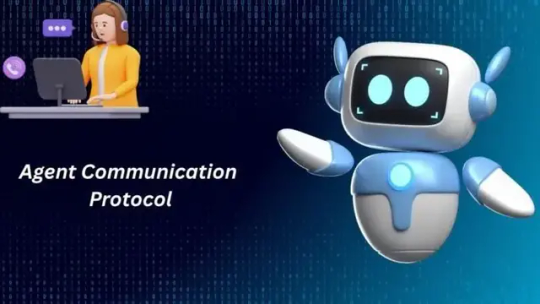#AgentCommunicationProtocol
Explore tagged Tumblr posts
Text
Agent Communication Protocol: Vision For AI Agent Ecosystems

Agent Communication Protocol IBM
IBM released its Agent Communication Protocol (ACP), an open standard for connecting and cooperating AI agents built on different frameworks and technology stacks. IBM thinks Agent Communication Protocol, a basic layer for interoperability, will become the “HTTP of agent communication,” enabling AI bots a standard language to do complex real-world tasks.
Since agents often operate as “islands” in the current AI ecosystem, the protocol, announced on May 28, 2025, addresses a fundamental issue. Custom integrations, which are expensive, fragile, and hard to scale, are needed to connect these agents.
Every integration is expensive duct tape without a standard. IBM's Agent Communication Protocol aims to eliminate these connections by offering a single interface for agents produced with BeeAI, LangChain, CrewAI, or custom code.
ACP underpins BeeAI, an open-source platform for locating, executing, and building AI agents. IBM gave BeeAI to the charity Linux Foundation in March. Open governance provides transparency and community-driven progress for Agent Communication Protocol and BeeAI. Developers can adopt and improve the standard without being tied to one vendor.
The design of Agent Communication Protocol aimed to improve Anthropic's Model Context Protocol (MCP). MCP has become the standard for agents to access external data and resources. ACP connects agents directly, while MCP connects them to databases and APIs. BeeAI and other multi-agent orchestration systems can leverage ACP and MCP.
IBM Research product manager Jenna Winkler stressed the importance of both protocols for real-world AI expansion. Two agents simultaneously acquire market data and simulate using MCP. They compare their results and give a proposal using Agent Communication Protocol.
Agent Communication Protocol is a RESTful HTTP-based protocol that supports synchronous and asynchronous agent interactions. Since it follows HTTP conventions, this architecture is easier to use and integrate into production systems than protocols that use more complicated communication methods. In comparison, MCP uses JSON-RPC.
Developers can directly communicate with agents using curl, Postman, or a web browser, making Agent Communication Protocol easy to use. Python and TypeScript SDKs are convenient, but a specialised SDK is not necessary.
ACP simplifies offline discovery by letting agents include information in distribution packages. This allows agents to be located in secure, disconnected, or scale-to-zero settings. Agent Communication Protocol's asynchronous architecture is ideal for long workloads, although it offers synchronous communication for easy use cases and testing.
Agent Communication Protocol grants multi-agent system architects more design possibilities beyond technology. It goes beyond the traditional “manager” structure, where one “boss” agent coordinates. ACP lets agents talk and assign jobs without a mediator. Peer-to-peer capacity is crucial for internal and external agent interactions.
Kate Blair, IBM Research director of product incubation, said either agent can contact or assign a job. She described a triage agent who answers consumer questions and sends the history and interaction to the relevant service agent so they can address the ticket independently.
IBM Research showed an early ACP version. Soon after, Google introduced A2A, its agent-to-agent protocol. Blair expects more adjustments as they are tested in real life, and he believes multiple agent methods can be used in the early phases despite new rules.
ACP fosters developer participation and is community-led. Monthly open community calls and an active GitHub discussion section ensure community members always have jobs to offer.
#AgentCommunicationProtocol#BeeAI#ACP#IBMAgentCommunicationProtocol#AgentCommunicationProtocolACP#ModelContextProtocol#technology#technews#technologynews#news#govindhtech
0 notes